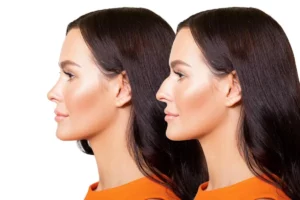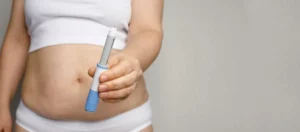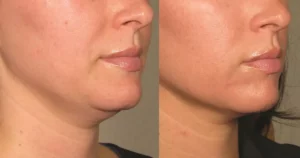Just like your body starts to require more care and concern over time—weaker muscles, bones and joints all begin to show up with the years—your skin shows its own signs of aging.
After your early 20s, your skin loses 1% of its natural collagen every year and the production of collagen starts to slow down over time as well.
Similarly, your skin’s natural hydration levels dip over the years as well, causing signs of aging like folds, lines and wrinkles along with overall sallowness and dullness to show. This is exactly where the importance of hyaluronic acid comes into play.
What is hyaluronic acid?
Healthline describes hyaluronic acid as ‘a naturally occurring glycosaminoglycan found throughout the body’s connective tissue. Glycosaminoglycans are simply long unbranched carbohydrates, or sugars, called polysaccharides.’
Your body naturally produces hyaluronic acid and is in charge of keeping your skin and tissues moist and plump.
As you age, your body’s capabilities to produce hyaluronic acid start to diminish, making it essential to use it topically or injected in your skin to keep it looking radiant and youthful. It works as a humectant and holds water molecules on your skin, retaining hydration.
Benefits of hyaluronic acid
- Hyaluronic acid’s primary function and benefit is its hydration property, keeping skin plump and moisturised by itself and when applied topically.
- It prevents transepidermal water loss, which means that it presents water from escaping from your skin, keeping it moisturised for longer.
- Hyaluronic acid is also used by doctors for treatment of arthritis as it aids in relieving joint pain.
- It is a key ingredient in anti-aging skincare because it helps fill in fine lines, wrinkles and tackles overall dehydration and dullness.
- If you suffer from eczema, hyaluronic acid’s intensely hydrating capabilities make it the perfect treatment to relieve dryness and itchiness, along with redness.
- Hyaluronic acid can also be used to soothe and heal wounds.
Side effects of hyaluronic acid
Since hyaluronic acid is a sugar that naturally occurs in your body, as long as it has been formulated correctly, it has limited side effects. Of course nothing suits everyone so always do a patch test, and those with rosacea should remember that low molecular weight hyaluronic acid can make you feel more sensitive.
It’s important to make sure you’re using a well formulated product that’s been approved by the FDA to make the most of hyaluronic acid, as is the case with using any skincare ingredient.
If you are getting hyaluronic acid injected into your skin, you may experience mild swelling or bruising which will subside soon or some other rare side effects of fillers may occur. If side effects occur, reach out to your dermatologist or aesthetic specialist for next steps.
If you have sensitive skin in general, always patch test even a hyaluronic acid serum to ensure that it won’t react with your skin.
Science behind hyaluronic acid

Hydrolyzed hyaluronic acid vs sodium hyaluronate
Hydrolyzed hyaluronic acid and sodium hyaluronate are the two most common versions of hyaluronic acid found in skincare products. Hydrolyzed hyaluronic acid is the version of the acid where the molecules have been broken down with a chemical reaction with water and are often found in serums, moisturisers and sleeping masks so it can easily plump your skin on the surface level.
Sodium hyaluronate is an even smaller molecular form of hyaluronic, where its sodium salt has been extracted, which makes it the most common choice for cosmetic chemists when they’re formulating skincare products.
Sodium hyaluronate tends to be a more stable form of hyaluronic acid and doesn’t oxidise as often or as easily, plus the small molecule size makes it easy for this form of the acid to penetrate into the deeper layers of your skin.
Molecular weight and diameter for superior penetration
The molecular weight of hyaluronic acid and the diameter both play an important role in determining its penetration capabilities to benefit your skin. Hyaluronic acid is most effective when its molecular weight is 130 kDa (a.k.a daltons).
Smaller hyaluronic acid molecules, under 500kDa when considering their diameter, absorb easily and are ideal to help increase moisture, skin elasticity and even improve the appearance of wrinkles.
It’s important to understand the molecular weight of hyaluronic acid because both kinds work differently and have their own benefits.
Low and medium hyaluronic acid molecules absorb into the skin faster and promote cell regeneration delivering long lasting results while those with a high molecular weight work to hydrate skin on the surface level for instant hydration.
The ideal hyaluronic acid-based products contain a blend of both kinds of molecular weights to give you the best of both worlds. Most serums and boosters typically come with a mix of both types as does the Profhilo skin bioremodeller (more on that below).
In the case of dermal fillers, small diameter hyaluronic acid molecules are linked together to create a larger molecule that helps the acid last in your skin and fill the area that it’s been injected in.
How to use and apply hyaluronic acid

Hyaluronic acid can either be used topically or as an injectable. It can also be used as a supplement but that is used more often in the case of arthritis and relieving joint pain. When used topically, it can of course be used as a serum, in a moisturiser or as a face mask.
For injectables, dermal fillers and Profhilo are the best sources of hyaluronic acid to penetrate into the deeper layers of your skin.
Hyaluronic acid in anti-aging products
Dermal fillers
Dermal fillers make use of hyaluronic acid to lift and plump skin. While you can get fillers for your entire face, they can also be injected to lift and reshape certain areas of your face like your jaw and your chin.
The natural fillers are injected in small controlled doses just under the surface of the skin to fill out sunken areas and lines, boost collagen production and give a smoother, firmer and more refreshed appearance.
The fillers we use at Isyaderm, such as Juvederm®, Boletero and Restylane®, are completely natural and made of hyaluronic acid.
ProFhilo
Profhilo is unlike other injectable treatments, differing from a dermal filler. Hyaluronic acid can be used in serums, in fillers, in supplements and now also in biostimulators when used in the right proportion. This is a bio remodeller which makes use of stabilised hyaluronic acid to actually remodel multiple layers of your skin.
This works directly on the source of the skin (deeper layers) that’s causing aging as opposed to superficially attempting to reverse signs of aging.
According to the company’s claims, it stimulates the fibroblast cells, thereby increasing collagen and elastin production, activates the keratinocytes to increase the synthesis of collagen and elastin and preserves and encourages the viability of adipocytes that affect the quality of adipose tissue.
While a filler is designed to fill your skin as the name suggests, Profhilo is designed to stimulate and hydrate your skin from the deeper layers.
Juvéderm Volite
This skin booster is a hyaluronic acid gel—unlike a traditional filler—and is injected right into the middle layers of the dermis.
The gel is a combination of low and high molecular weight hyaluronic acid chains and adds volume to the skin, while also nourishing it, improving hydration and elasticity for a smoothened look overall.
Plus, since it’s injected in the middle layers as opposed to in those closer to the outer layer, the effects last longer than regular dermal fillers.
Apart from the face, it can also be used to rejuvenate skin on your neck, décolletage and the back of your hands as well.
Restylane Vital
This dermal booster is a NASHA (non-animal stabilised hyaluronic acid) gel made by bacterial fermentation that aims to replenish the hyaluronic acid that your skin loses due to the aging process.
Only a small amount of this hyaluronic acid gel is required to be injected into your skin to restore lost hydration and suppleness. No matter your skin type, this booster will work for you.
It is also available with or without lidocaine—this works as an anaesthetic, making the injection more comfortable, if present in the vial. This booster is perfect for those wanting to target overall skin aging as well, including signs of sun damage.
Serums

One of the most potent forms of topical hyaluronic acid is when it is bottled as a serum or a booster. Each of these blends will contain stabilized hyaluronic acid that’s meant to be patted into your skin and used once every day to hydrate the superficial layers.
The best hyaluronic-acid-based products
Dr Kiran Sethi’s most recommended hyaluronic acid-based skincare products include:
- YALODÉ Intensive Wrinkle Repair Intensive Anti-Age Cream
- FCL HA4 Plus Serum
- Dermaceutic Hyal Ceutic Intense Moisturizer
- La Roche-Posay Hyalu B5 Serum
Hyaluronic acid in skincare
Apart from anti-aging skin solutions, hyaluronic acid is a popular ingredient in skincare for those who are younger as well. Hydration is one of the most basic needs of the skin, no matter your skin type, and hyaluronic acid is one of the most potent sources of the same.
You’ll find it often used as a serum or booster in topical skincare; it is meant to be tapped into your skin and used daily to keep it hydrated and plump. Moisturisers and face masks (those meant to be washed off and the kind you leave on overnight) also effectively hydrate your skin when doused in hyaluronic acid.
Another skincare product you’ll find hyaluronic acid in is eye creams, making it an essential to keep your under eye area moisturised as well.







